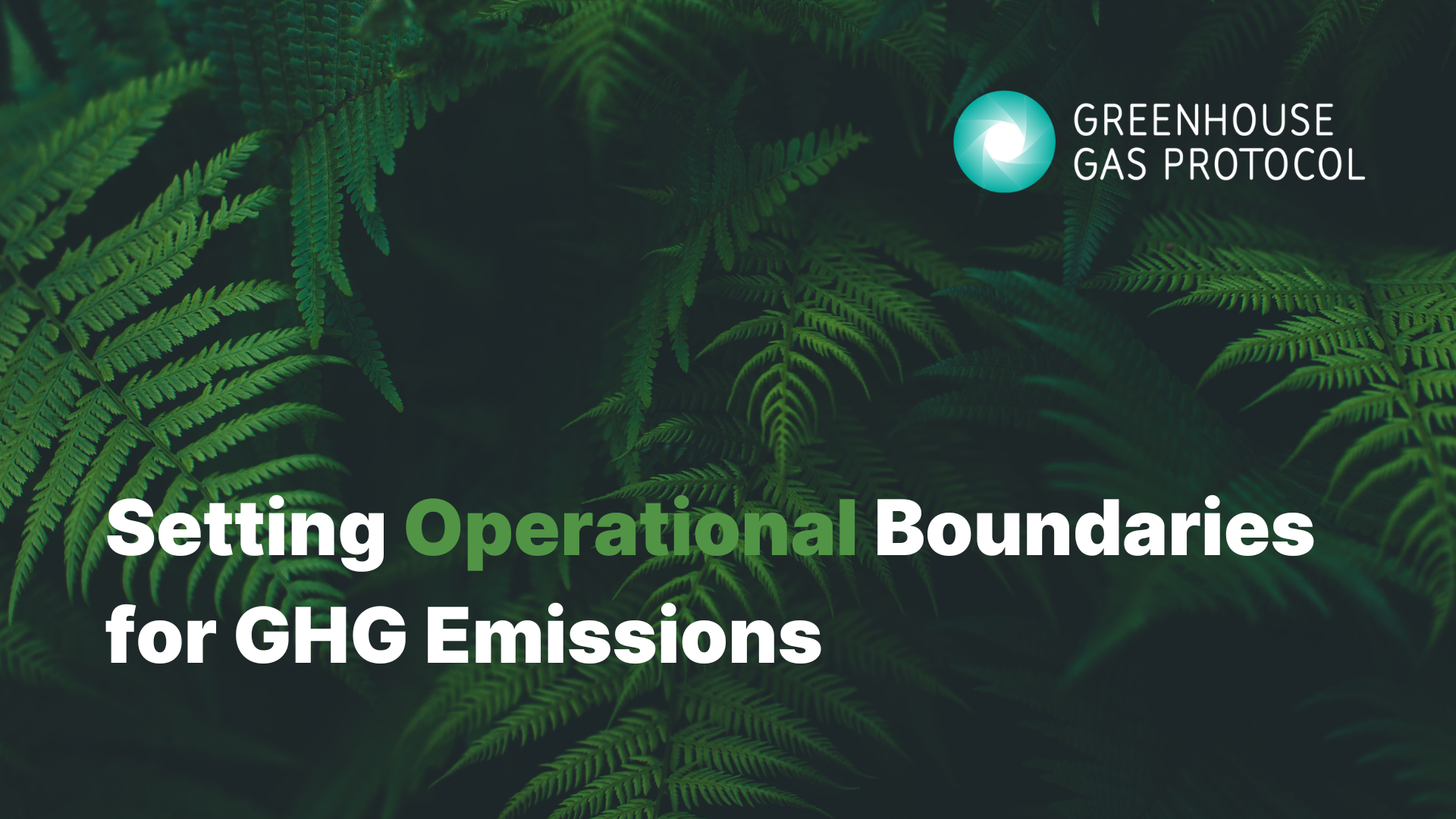Operational Boundaries: Classifying Direct and Indirect Emissions
Once a company has defined its organizational boundaries, the next crucial step in greenhouse gas (GHG) accounting is setting operational boundaries. This involves identifying and categorizing emissions as either direct or indirect, a process that helps in understanding the full scope of a company’s GHG impact. Accurate classification of these emissions is essential for comprehensive reporting and effective management of GHG risks and opportunities.
Types of Emissions
Direct Emissions (Scope 1):
Definition: Direct emissions are emissions from sources that are owned or controlled by the company.
Examples: These include emissions from company-owned or controlled boilers, furnaces, vehicles, and other combustion equipment. Additionally, emissions from chemical production in owned or controlled process equipment also fall under direct emissions.
Significance: Scope 1 emissions are within the company’s direct control, making them easier to manage and reduce through operational improvements and efficiency measures.
Indirect Emissions:
Scope 2: Electricity Indirect Emissions
Definition: Scope 2 emissions are indirect emissions from the generation of purchased electricity consumed by the company.
Examples: These include emissions from the electricity that a company buys to power its operations, such as lighting, heating, cooling, and running machinery.
Significance: While these emissions occur at the power plant where the electricity is generated, they are a consequence of the company's energy use. Companies can influence Scope 2 emissions by improving energy efficiency and sourcing renewable energy.
Scope 3: Other Indirect Emissions
Definition: Scope 3 emissions are other indirect emissions that result from the company’s activities but occur at sources owned or controlled by another company.
Examples: These emissions encompass a wide range of activities, such as the extraction and production of purchased materials and fuels, transportation-related activities in vehicles not owned or controlled by the company, waste disposal, and the use of sold products and services.
Significance: Scope 3 emissions often constitute the largest portion of a company’s carbon footprint. Managing these emissions can be challenging due to the need for collaboration across the value chain, but it also offers significant opportunities for innovation and leadership in sustainability.
The Importance of Comprehensive Emissions Accounting
By accounting for all three scopes of emissions—Scope 1, Scope 2, and Scope 3—companies can gain a holistic view of their GHG impact. This comprehensive approach allows companies to:
Identify and Mitigate Risks: Understanding the full spectrum of emissions helps in identifying potential risks associated with regulatory changes, supply chain disruptions, and reputational damage. Companies can then develop strategies to mitigate these risks.
Discover Reduction Opportunities: A detailed emissions inventory highlights areas where efficiency improvements can be made, whether in direct operations or across the value chain. This can lead to cost savings and operational efficiencies.
Enhance Reporting and Transparency: Transparent reporting of all emission scopes builds trust with stakeholders, including investors, customers, and regulators. It demonstrates a company’s commitment to sustainability and responsible environmental stewardship.
Align with Global Standards: Comprehensive emissions accounting aligns with global standards and frameworks, such as the GHG Protocol, which enhances the credibility of the company’s sustainability efforts and facilitates participation in international programs and initiatives.
Best Practices for Setting Operational Boundaries
To effectively set operational boundaries, companies should follow these best practices:
Conduct a Thorough Emissions Inventory: Identify all potential sources of direct and indirect emissions within the organizational boundaries. This inventory should be detailed and cover all relevant operations and activities.
Engage with Stakeholders: Collaborate with internal and external stakeholders to gather accurate data and understand the full impact of the company’s activities. This includes engaging suppliers, customers, and other partners in the value chain.
Implement Robust Data Management Systems: Use reliable data management systems to track and report emissions. These systems should ensure data accuracy, consistency, and transparency.
Regularly Review and Update Boundaries: Operational boundaries should be reviewed and updated regularly to reflect changes in the company’s operations, such as acquisitions, divestitures, or changes in supply chain dynamics.
Set Clear Reduction Targets: Based on the comprehensive emissions inventory, set clear and achievable targets for reducing emissions across all scopes. This should be part of a broader sustainability strategy that includes action plans and performance tracking.
Leveraging Zeroe's Platform for Best Practices
Zeroe’s comprehensive carbon accounting platform is designed to assist companies in implementing these best practices effectively. Our platform provides an intelligent data and emissions factor mapping solution that reduces the need for in-house GHG expertise. By seamlessly ingesting company data and leveraging AI, Zeroe's platform classifies and maps emissions factors, ensuring accurate and consistent data management. It facilitates collaboration with stakeholders by providing transparent and easily accessible emissions data, making it simpler to engage suppliers and partners in sustainability initiatives. Additionally, our platform supports regular updates and reviews of operational boundaries, helping companies stay adaptive to changes in their operations and the regulatory environment. With Zeroe’s platform, companies can set and track reduction targets more efficiently, driving continuous improvement in their sustainability performance.
Conclusion
Setting operational boundaries is a vital step in GHG accounting that allows companies to classify and manage their emissions comprehensively. By accurately identifying and categorizing direct and indirect emissions, companies can better understand their GHG impact, identify reduction opportunities, and enhance their sustainability reporting. This comprehensive approach not only supports regulatory compliance but also drives long-term business value through improved efficiency, innovation, and stakeholder engagement.
References:
GHG Protocol - The Corporate Accounting and Reporting Standard: https://ghgprotocol.org/sites/default/files/standards/ghg-protocol-revised.pdf
